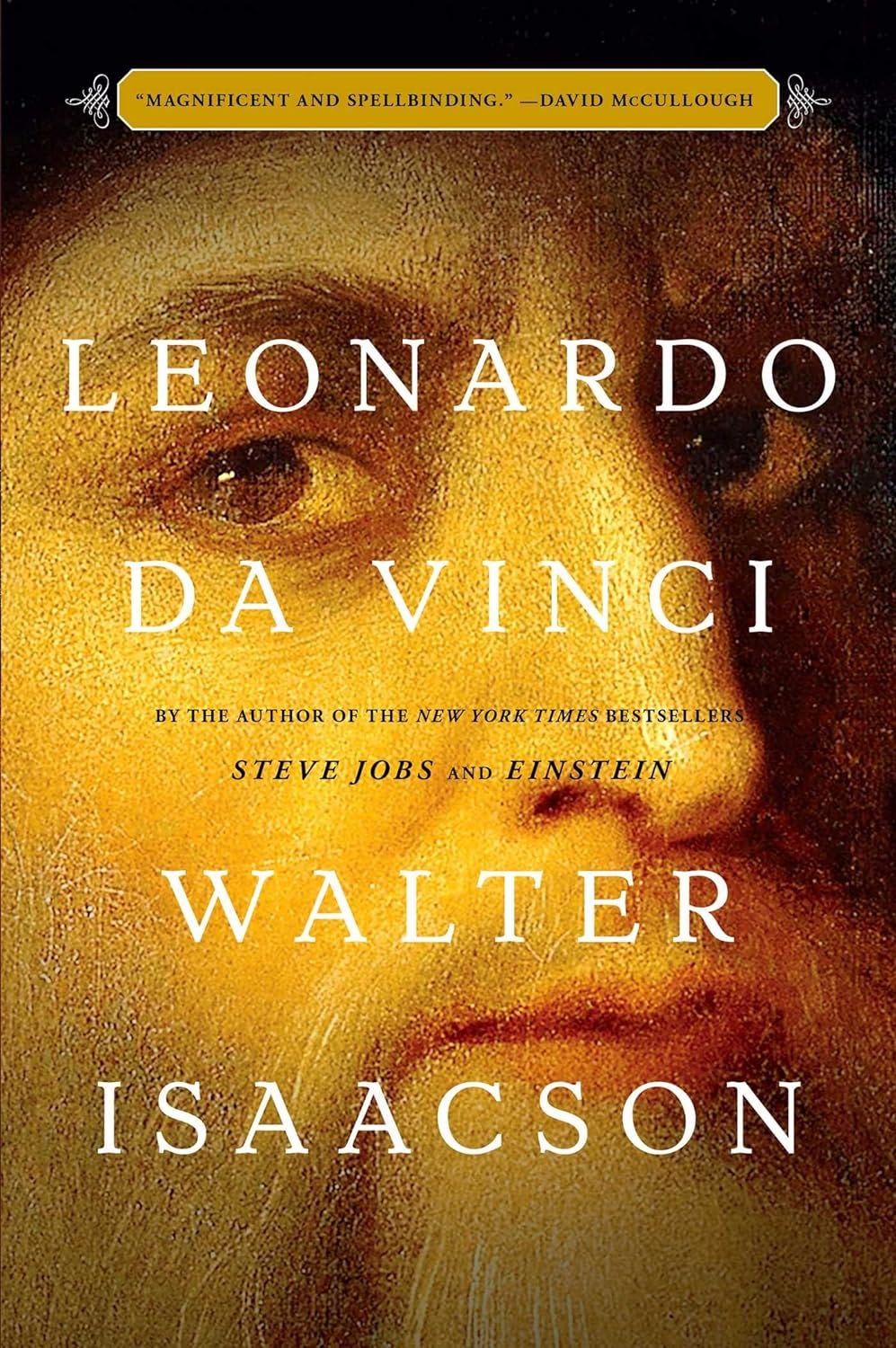Leonardo da Vinci
Creativity Hack: How to Think Like Leonardo da Vinci in 4 Steps
Dear friends, Happy New Year! I am Tom Niklas, a seasoned writer and book reviewer. Welcome everyone to Tom's ReadVault, please subscribe to me and join us in reading 100 books a year together.
Today I want to share with you a new book, Leonardo da Vinci. I feel extremely honored and excited to have the chance to talk to you about this book. Why? Because Leonardo da Vinci was such an extraordinarily great man. Among the brilliant minds who made outstanding contributions throughout human history, Leonardo da Vinci is one of the best. He single-handedly led the way in philosophy, physics, and art, achieving remarkable accomplishments beyond the reach of ordinary people.
Let me briefly go over what Leonardo did so you can understand how amazing he was. First of all, whether it's the Mona Lisa or The Last Supper, either one of these paintings alone is enough for his name to shine through the ages, known and talked about by countless people. It's fair to say that Leonardo completely redefined what it means to be a painter, sparking another revolution in the art of painting.
Secondly, in his astronomical research, his notes put forth the theory that "the sun does not move", which at the time was unheard of heresy. Keep in mind, that Copernicus was still a child back then. Leonardo also tried observing the moon using telescopes, had many ideas about harnessing solar power, and wrote a book called On the Nature of Astronomy.
Now let's look at physics. He invented hydraulic actuators, discovered the principle of inertia, developed theories of leverage, and believed perpetual motion machines were impossible. He came up with the concept of gravity 200 years before Newton, truly visionary.
In optics, he was the first to propose light and sound are both types of waves, and that the speed of light is finite, designing pinhole camera experiments. In meteorology, he discovered atmospheric refraction and was among the first scientists trying to explain why the sky is blue.
In medicine, Leonardo was an expert anatomist who drew precise diagrams of the human body's internal structures. He studied the functions of the heart and circulatory system, discovering atherosclerosis through dissection and proposing how it forms. His theories on the direction of blood flow and circulation status inside the heart were only proven correct centuries later.
In math, Leonardo is known to be the earliest user of the symbols for addition, subtraction, multiplication, and division, and studied the value of pi throughout his life. In architecture, he designed bridges, churches, castles, sewage systems, and more. He was also the first to propose separating pedestrian and vehicular traffic. In hydroengineering, the canal systems he designed are still in use today.
It's fair to say Leonardo deserves to top the list of history's ten greatest inventors. Beyond that, he had tremendously deep knowledge of geography, geology, biology, paleontology, philosophy, and more - he was exceptional in every field. So when I saw this book, I couldn't wait to recommend it to all of you. I think children must read this book because it shows us the vast potential within a single person, how incredibly great one person can become, and how important curiosity is to them.
There is one particular record in Leonardo's notes before his death that people find very interesting. He wrote that he must figure out what shape a woodpecker's tongue is. Think about it - why would a seventy or eighty-year-old man become curious about the structure of a woodpecker's tongue? Have any of you ever wondered about or looked into what a woodpecker's tongue is like? But he maintained interest in everything throughout his life, so he lived in a constant state of flow, fully invested, and that allowed him to have a fulfilling life.
Next, let's look at how this boy from a small town in Italy grew step-by-step into a legendary genius. Leonardo was born on Saturday, April 15, 1452, at 10 pm. His grandfather carefully recorded the precise time, which shows their family valued record keeping. As an illegitimate child, Leonardo was quite fortunate. Consider this - in that era, many outstanding figures who made huge contributions were illegitimate children.
Keep reading with a 7-day free trial
Subscribe to ReadVault to keep reading this post and get 7 days of free access to the full post archives.



